The 80 Greatest Shots In Disney Animation History [Part Four]
(Welcome to The Greatest Shots in Disney Animation History, a limited series where Disney expert Josh Spiegel selects and ranks the defining moments in one of the greatest, most important, and most influential collections of films ever made.)
This part of the ongoing list covers entries 50 through 41.
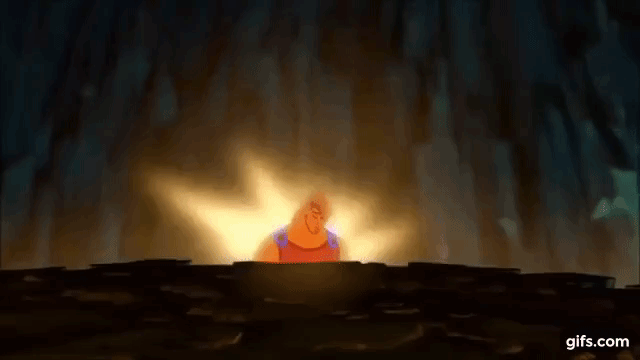
50. Hercules: Hercules becomes a god
What does a demigod have to do to convince his family that he's a true god? In the case of the mythical Hercules, he has to go to Hell and back, literally. In the climax of Disney's 1997 adaptation of the story of Hercules, our hero (voiced by Tate Donovan) makes a deal with Hades to save his true love Meg. But in doing so, risking his own life in the river Styx, Hercules becomes a true god and the reveal of this transformation is all the more striking because of the deliberately grim backdrop. Hercules was largely criticized back in the 1990s for its more distinctive character and production design, taking its cue from designer Gerard Scaife. But moments like this simply prove that the sharper design only lends to the emotion you feel as Hercules finally becomes a god.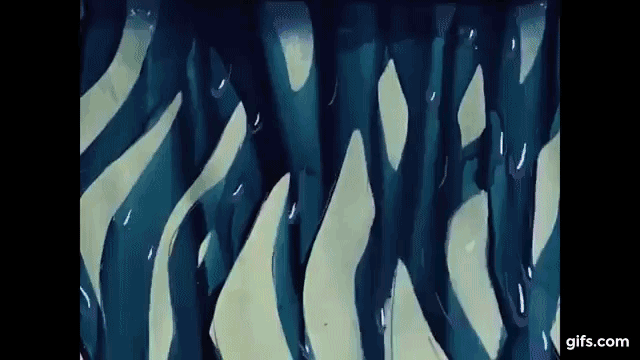
49. Saludos Amigos: Flora and fauna turning to flamingoes
Saludos Amigos is the shortest feature film in the Disney Animation canon, in part because it's barely a feature film. (The Academy of Motion Picture Arts and Sciences requires a film to be at least 40 minutes long to qualify as feature length. Saludos Amigos is 42 minutes long. 42!) The final segment in the package film, titled "Aquarela do Brasil", is its high point, as Donald Duck is introduced to the lush beauty and wonder of Brazil all while a now-famous song about the country plays. (If you know the Terry Gilliam film Brazil, you'll know the song.) Donald is besotted with the beauty of Brazil, which transforms in front of him. In this shot, we see pink flamingoes transform within a second from flowers, a dazzling and brief example of how, even in lean times at Disney, animators' inventive natures couldn't be quelled.
48. Mulan: The Hun army on the approach
The use of computer technology in hand-drawn animation was gradual throughout the 1990s at Walt Disney Animation Studios. Before they went all-in on computer animation for their features, they would use CGI sparingly but often to incredible effect. Consider, for example, this shot from the 1998 version of Mulan. The story, you may already know: the eponymous young woman impersonates a man to enlist in the Chinese army to save her elderly father from having to enlist and fight against the Huns. For a good chunk of the first hour, Mulan doesn't entirely clarify how terrifying the Huns could be. That is, until this shot where our heroine and her fellow soldiers take in the horrific sight of Huns descending a massive mountain face to attack. The CG here is used precisely, and in a way that almost makes the enemy look alien in nature, heightening the terror.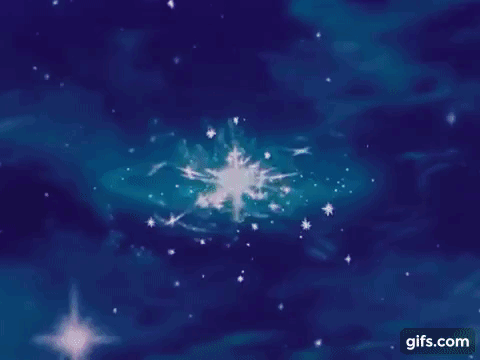
47. Peter Pan: Arriving in Never Land
We all know how to get to Neverland — second star to the right, straight on until morning. Once the Darling children and Peter Pan fly their way through those directions and arrive, they're greeted by the kind of fantastical, whimsical land straight out of a child's imagination. The visualization of that land from a faraway vantage point (as the Darlings rest on a cloud high above Neverland before touching the ground) is captured here, in a moment that feels like a storybook come to life. There are a lot of creative issues with Peter Pan, a film that earns the "outdated cultural depictions" branding more than once over. But the film's animation brilliantly translates the childlike imagination that came up with Neverland to start.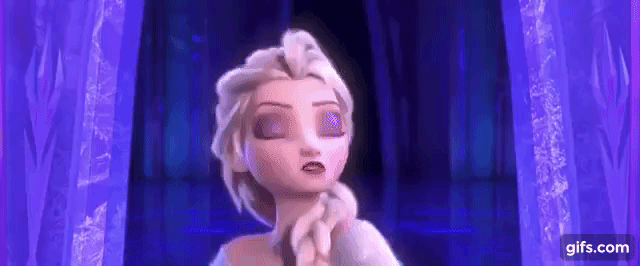
46. Frozen: The cold never bothered her anyway
Basically everyone can agree that the best part of Frozen is "Let It Go". You might be exhausted with the song, you might wish that you never hear it again, but this is a phenomenon that earned its unavoidable cultural status. As much as the song itself is quite wonderfully written and performed, it's the very last shot of the musical sequence that stands out more than anything else in this 2013 film. Elsa's song is all about embracing her inner self, accepting her magical powers and being proud of them. As she closes the song by telling us that she never was that bothered by cold temperatures, Elsa gives the camera a knowing, sly look. Here, again, character animation communicates volumes beyond what a line or two of dialogue could ever accomplish.
45. The Three Caballeros: Baia
After about 20 or so minutes, the 1944 film The Three Caballeros moves into high gear with a trip into Baia. The city is captured in seductive, lush animation as Donald Duck first views what it might be like to live there. This shot works as much because of the song, which is the best the film has to offer, as because of the lively animation, making it seem like each cobblestone, each road, and each building is bouncing and teeming with life. What holds The Three Caballeros back in its first third is that the audience is at a remove with what's on screen. Once "Baia" kicks in, we're inexorably drawn into the story thanks to animation like this. It's only a shame we don't get to spend more time in this paradise.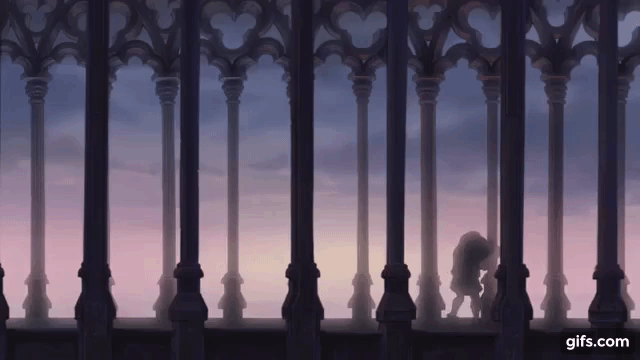
44. The Hunchback of Notre Dame: Quasimodo in silhouette
Disney's adaptation of The Hunchback of Notre Dame is one of their most fascinating features. The film tries its best to both be a "Disney movie," with wisecracking sidekicks, anthropomorphized animals, and memorable Broadway-style songs, and a fairly straightforward adaptation of Victor Hugo's tragic novel about a hunchbacked bell-ringer and the gypsy with whom he falls in love. One of the film's most peerless elements is its colorful, richly detailed, and vivid animation. Quasimodo's big "I Want"-style number comes early, with "Out There," as he sings of his desire to simply walk among the people of Paris. Quasi's loneliness is visually echoed in shots like this, where he stands in near-silhouette among the columns of the Notre Dame Cathedral.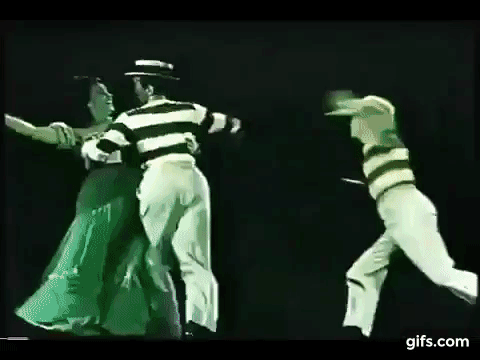
43. The Three Caballeros: Men turning into roosters
In the same vein as the shot from Saludos Amigos, there are moments in its thematic sequel The Three Caballeros that are both remarkably rendered and surprisingly visceral. The extended setpiece scored to the song "Os Quindins de Yaya" features Donald Duck and Jose Carioca dancing with singer Aurora Miranda as she performs. Most importantly, Donald and Jose are joined by a number of men (real men, not animated ones) who are attracted to Miranda, leading to a dancing tussle visualized with shocking red background colors. If that wasn't enough, the men shift into being braying roosters, fighting over who might get a chance with Ms. Miranda. I've already written about how The Three Caballeros is the horniest Disney movie ever — this shot proves that.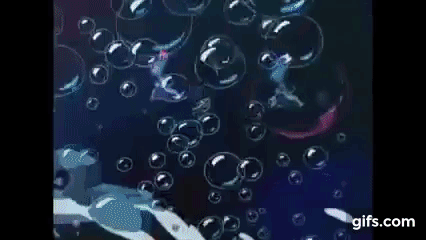
42. Cinderella: Cinderella in the bubble
Cinderella is living in something of a Kafkaesque nightmare when the film bearing her name begins. She's undoubtedly gorgeous, even when wearing a dirty frock and performing menial tasks; she's charming, even if her evil stepmother refuses to notice; and she's got a great singing voice, though her stepsisters wouldn't want to admit it. When they try to sing "Sing, Sweet Nightingale", they butcher it; when Cinderella hears it, noodling in a reverie while scrubbing the stairs, we're sent into her fantasy, as we see her inside of a soap bubble, cleaning and singing at the same time. There's not much in the way of visual experimentation in Cinderella in the same way that you could find in Dumbo or Pinocchio, but here, for a moment, you get a dazzling little daydream.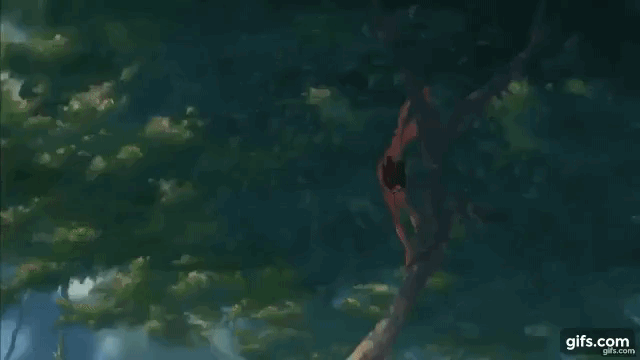
41. Tarzan: Sliding on the trees
The 1999 adaptation of Edgar Rice Burroughs' vine-swinging hero is both one of Disney's most popular modern animated films, and one that hasn't quite stayed around in the collective cultural consciousness. More than 20 years later, one of the film's most striking elements, though, is its fluid animation. To depict Tarzan at the height of his powers, you really do have to see him swinging, sliding, and jumping through the jungles of Africa, lest you doubt that he really was king of the jungle. To wit, the film's best shots are those with Tarzan in relative flight, like this one. Glen Keane led a team of animators in bringing Tarzan to life, taking their cue from modern skateboarders. You can see that influence here, but in a way that feels apt to the character, not cheesy or lazy. The animation in this film is gasp-inducing, even if the story is not.
***
We're taking a break for the weekend, but part five of this series will arrive on Monday. See you then!
